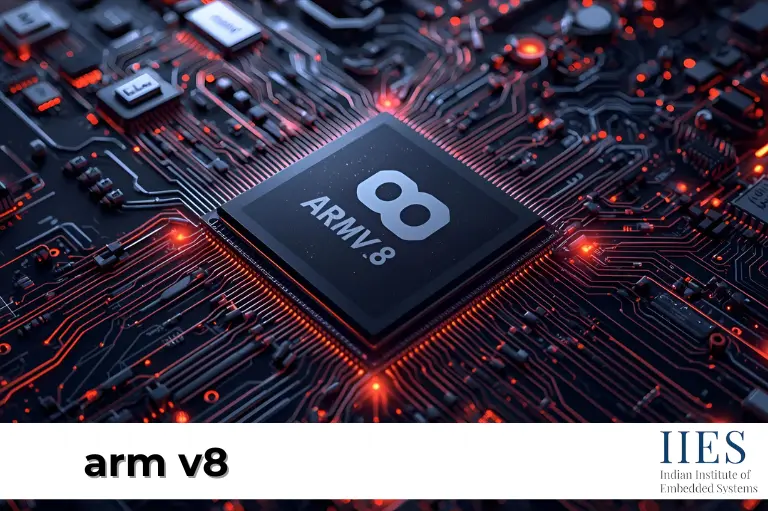
ARMv8 is a 64-bit instruction set architecture designed by ARM Holdings. It brings better performance, energy efficiency, and stronger security compared to earlier ARM versions. Today, it powers smartphones, laptops, servers, and IoT devices worldwide.
ARMv8 is a 64-bit processor architecture that supports higher performance, improved security, and energy efficiency. It works across devices from phones to servers while staying backward compatible with ARMv7.
ARMv8 is the successor to the ARMv7 architecture and was officially introduced in 2011. It was a major step forward because it introduced 64-bit processing while still keeping compatibility with 32-bit applications.
This architecture is divided into two execution states:
Thanks to this dual-mode design, armv8 features allow a smooth balance between performance and backward compatibility.
ARMv8 is at the heart of many devices we use daily. From the smartphone in your pocket to the servers powering cloud platforms like AWS, ARMv8 plays a role in enabling speed, low power consumption, and enhanced security.
Its wide adoption is driven by:
ARMv8 introduced several important features that make it more advanced than earlier ARM architectures:
ARMv8 brings a big leap in processing power and efficiency compared to older versions. It not only supports 64-bit computing but also ensures strong security and smooth backward compatibility.
ARMv8 is not limited to one category of gadgets—it powers a wide range of devices. From smartphones and tablets to laptops and even servers, its flexibility makes it a universal choice.
This variety shows how ARMv8 is not limited to just mobile devices—it’s shaping the future of cloud computing, IoT, and consumer electronics.
When comparing ARMv8 to ARMv7, the improvements are clear. ARMv8 delivers 64-bit capability, more memory support, and advanced security, making it far more future-ready than ARMv7.
| Feature | ARMv7 (32-bit) | ARMv8 (64-bit) |
|---|---|---|
| Architecture | 32-bit | 64-bit + backward 32-bit |
| Performance | Limited to smaller workloads | Handles larger and complex workloads |
| Memory Support | Up to 4 GB RAM | More than 4 GB RAM |
| Security | Basic protection | Advanced security features (TrustZone, Secure Boot) |
| Virtualization | Limited | Full support for virtualization |
Security is one of the strongest points of ARMv8. It includes features designed to protect devices from modern threats:
These security measures make ARMv8 processors reliable for banking apps, secure communication, and enterprise systems.
ARMv8 processors are used across industries for speed, security, and efficiency. They appear in mobile devices, IoT gadgets, servers, and even automotive systems.

ARMv8 is more than just a processor upgrade—it’s the foundation of modern mobile, IoT, and server technology. With its mix of power, security, and energy efficiency, it bridges the gap between today’s needs and tomorrow’s innovations. Whether in a phone or a data center, ARMv8 architecture delivers.
ARMv8 is a 64-bit processor architecture that offers better performance and security. ARMv7 is 32-bit with limited memory and basic security features.
ARMv8 powers smartphones, tablets, laptops, servers, and IoT devices. Examples include Apple A14 Bionic, Qualcomm Snapdragon 750G series, Microsoft SQ1, and Amazon Graviton2.
Yes, ARMv8 delivers 64-bit execution, enhanced security with TrustZone and Secure Boot, and improved energy efficiency.
Yes, ARMv8 supports AArch64 for 64-bit and AArch32 for 32-bit ARMv7 applications.
Yes, it allows multiple operating systems to run on the same hardware, making it suitable for servers and cloud computing.
Key benefits include high performance, energy efficiency, strong security, backward compatibility, and virtualization support.
Indian Institute of Embedded Systems – IIES